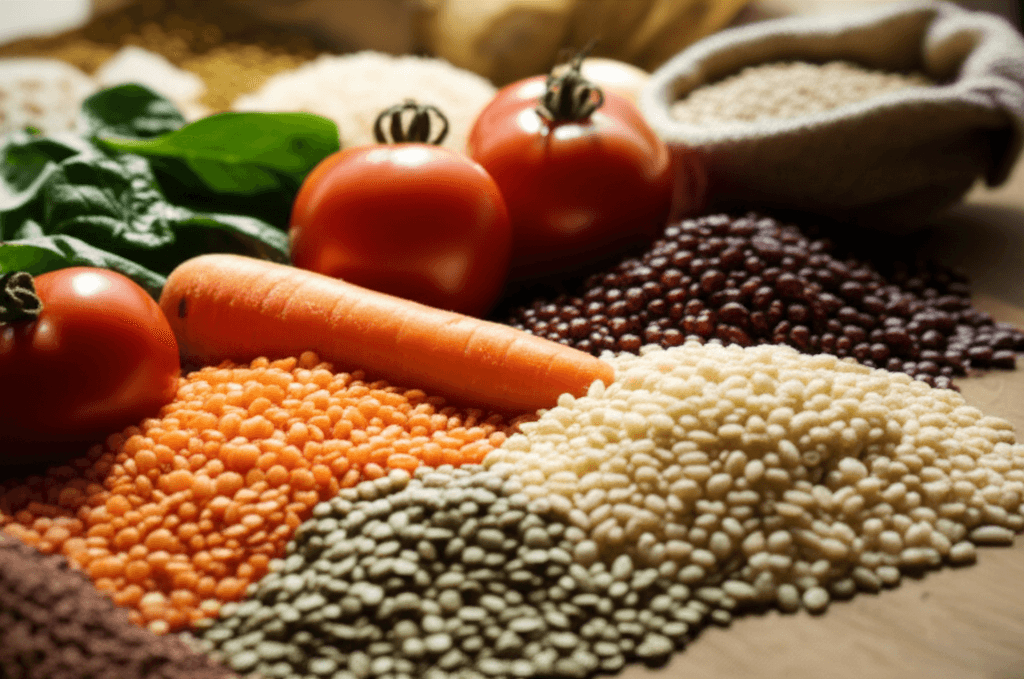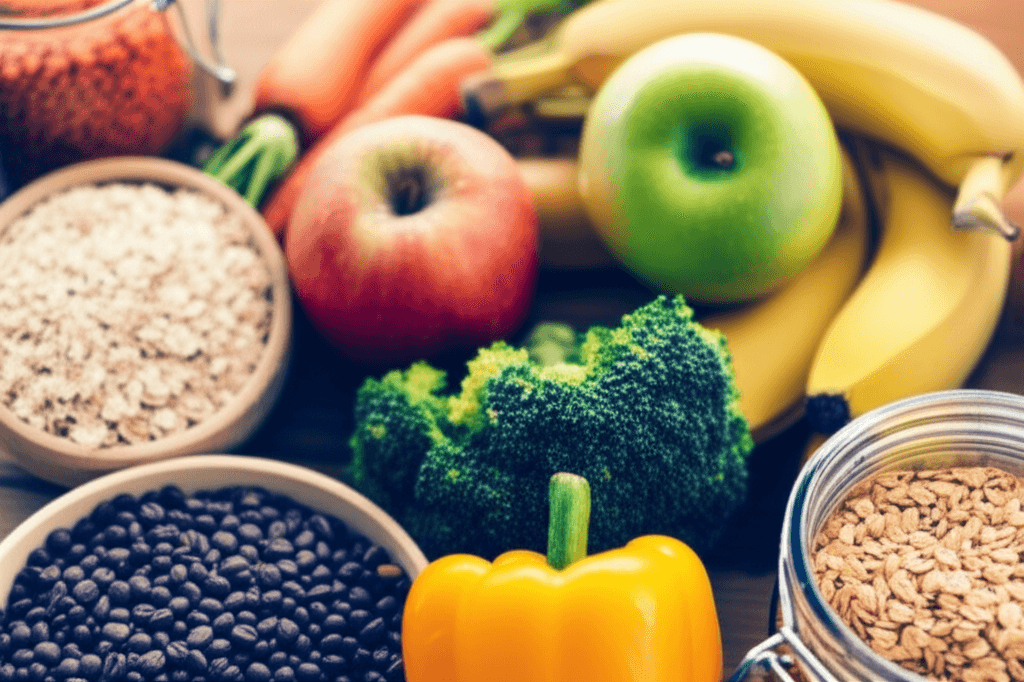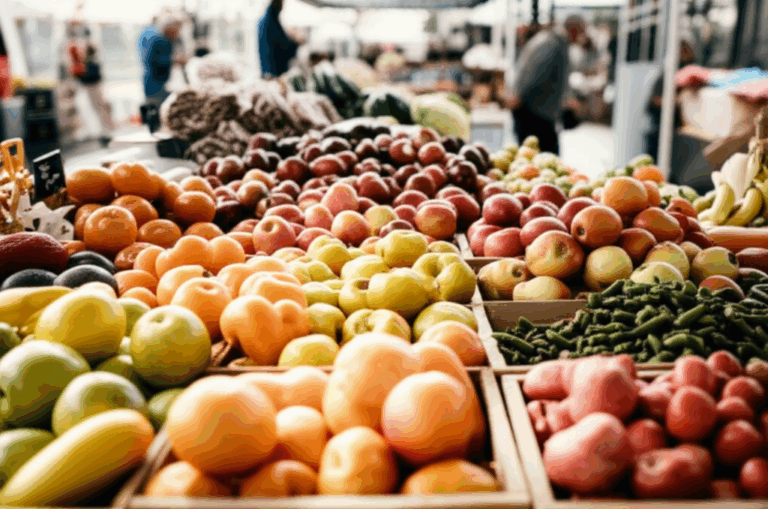In an era where health is paramount but living costs continue to climb, many wonder if nutritious eating is an unaffordable luxury. The good news is that embracing natural foods can be both healthy and economical, offering a practical path to well-being without straining your budget. It’s a common misconception that balanced meals and fresh produce are inherently expensive, especially in a country like India. However, with thoughtful planning and smart choices, a healthy diet is well within reach for everyone.

The Power of Whole Foods: Why Natural is Best
Whole foods are ingredients in their natural or minimally processed state, offering essential nutrients without excessive additives. They are generally more nutrient-dense than processed foods, packed with vitamins, minerals, and antioxidants crucial for overall health. Opting for whole foods helps you avoid the hidden sugars, unhealthy fats, and artificial ingredients often found in processed alternatives, which can contribute to weight gain, chronic diseases like type 2 diabetes, and cardiovascular issues.
Key Health Benefits of a Natural Food Diet:
- Heart Health: Natural foods are rich in anti-inflammatory antioxidants, magnesium, and healthy fats, which support cardiovascular well-being and can help reduce the risk of heart disease.
- Blood Sugar Control: The fiber content in whole foods helps in managing blood sugar levels effectively, a significant benefit in combating the rising prevalence of diabetes.
- Reduced Inflammation: Vegetables, fruits, nuts, and seeds are high in antioxidants that combat free radicals and reduce inflammation in the body.
- Enhanced Digestive Health: Whole foods are abundant in fiber, which is vital for a healthy digestive system, preventing constipation and supporting beneficial gut bacteria.
- Sustained Satiety and Weight Management: The fiber and nutrient density of natural foods promote a feeling of fullness, which can help control appetite and prevent overeating, aiding in weight management.
- Mental Well-being: A diet rich in whole, unprocessed foods is linked to a lower risk of depression and other mental health disorders, thanks to essential brain-supporting nutrients like omega-3 fatty acids found in nuts, seeds, and leafy greens.
- Reduced Disease Risk: Consistently consuming whole foods has been shown to lower the risk for heart disease, diabetes, and metabolic syndrome.

Smart Strategies for Affordable Healthy Eating
Eating healthily on a budget doesn’t require a radical overhaul but rather a strategic approach to planning, shopping, and cooking.
1. Master the Art of Meal Planning
Planning your meals in advance is perhaps the most crucial step to eating healthy on a budget. It helps you get organized, save money, and make healthier choices.
- Inventory Check: Before hitting the store, take stock of what you already have in your pantry, fridge, and freezer to avoid duplicate purchases and food waste.
- Create a Menu: Plan your meals for the week, considering recipes that use similar ingredients or allow for leftovers to be repurposed.
- Stick to a Shopping List: A well-thought-out list prevents impulsive buys, which are often expensive and less nutritious.
2. Shop Smart and Save
How and where you shop significantly impacts your food expenses.
- Embrace Seasonal Produce: Buying fruits and vegetables in season is a smart strategy for both health and savings. Seasonal produce is typically more abundant, flavorful, nutritious, and cheaper.
- Summer (March to May): Mangoes, watermelons, muskmelons, cucumbers, tomatoes, bottle gourd.
- Monsoon (June to September): Leafy greens like spinach and fenugreek, corn, lychees, jamun, guavas, pomegranates, apples, pears.
- Autumn (October to November): Pears, pomegranates, apples, sweet grapes, carrots, turnips, radishes, sweet potatoes, cauliflower, beans.
- Winter (December to February): Citrus fruits (oranges, lemons), leafy greens (spinach, mustard greens, fenugreek), cauliflower, carrots, fresh peas.
- Buy in Bulk: For staples like grains, lentils, nuts, and seeds, purchasing in bulk can lead to significant savings.
- Compare Unit Prices: Always check the unit price (price per kilogram or per unit) to identify the best deals, especially when buying in larger quantities.
- Utilize Farmers’ Markets: Local farmers’ markets often offer fresher produce at better prices by cutting out middlemen. This also supports local agriculture.
- Don’t Shop Hungry: Shopping on an empty stomach can lead to impulse purchases of unhealthy and expensive items.
- Consider Frozen or Canned (Unsweetened/Low Sodium): When fresh produce is unavailable or expensive, frozen fruits and vegetables are excellent, nutrient-retaining alternatives. Canned options like beans, chickpeas, and tomatoes can also be cost-effective and long-lasting.
3. Cook at Home and Get Creative
Home cooking gives you complete control over ingredients and portion sizes, often resulting in healthier and more economical meals than eating out or buying pre-prepared foods.
- Batch Cooking: Prepare larger quantities of meals and portion them for lunches or dinners throughout the week. This saves time and reduces the temptation to order takeout.
- Repurpose Leftovers: Get creative with leftovers. Yesterday’s vegetable curry can become a filling for a wrap, or leftover rice can be transformed into a fried rice dish.
- Limit Highly Processed Foods: Ready-to-eat meals, packaged snacks, and sugary desserts are typically high in unhealthy fats, sugar, and salt, and are more expensive. Opt for homemade healthy alternatives like roasted nuts, air-popped popcorn, or fruit.

Affordable & Nutritious Natural Foods in India
India’s diverse culinary landscape offers a wealth of natural, budget-friendly foods that are packed with essential nutrients.
1. Grains and Millets
Staples like wheat, rice, and various millets form the backbone of affordable, healthy eating in India.
- Wheat and Rice: Widely available and inexpensive, they are excellent sources of carbohydrates. Brown rice is a healthier option than white rice.
- Millets: Jowar, ragi, and bajra are highly cost-effective, especially when purchased in bulk. They are rich in protein, fiber, and antioxidants, aiding in diabetes management and weight control. Millets are also sustainable and environment-friendly.
- Oats: Inexpensive, filling, and rich in soluble fiber, oats help reduce cholesterol and control blood sugar.
2. Legumes and Pulses
Lentils (dal), chickpeas (chana/chole), rajma (kidney beans), and moong dal are protein powerhouses that are central to the Indian diet. They are abundantly available and reasonably priced.
- Lentils (Dals): A cornerstone of Indian cuisine, dals are rich in protein, fiber, iron, and B vitamins. Moong dal is particularly easy to digest.
- Chickpeas (Chole/Chana): Versatile and nutritious, chickpeas can be bought dry or canned and are excellent for digestion, weight regulation, and heart health.
- Rajma: Not just comfort food, rajma is packed with protein, iron, and complex carbohydrates.
3. Fruits and Vegetables
Focus on seasonal produce for the best value and nutritional benefits.
- Leafy Greens: Spinach, fenugreek (methi), mustard greens (sarson), and amaranth are highly nutritious and affordable, especially when in season. They provide vitamins A, C, K, iron, and folic acid.
- Root Vegetables: Sweet potatoes, potatoes, and carrots are inexpensive, versatile, and provide essential vitamins and minerals.
- Bananas: One of the most affordable fruits year-round, rich in potassium, Vitamin C, and B6, supporting heart health and digestion.
- Other Seasonal Choices: Look for affordable seasonal options like bottle gourd, ridge gourd, pumpkin, tomatoes, and cucumbers.
4. Dairy and Protein Sources
- Eggs: An incredibly healthy, nutritious, and universally available food that provides all essential amino acids and micronutrients at a reasonable price.
- Curd (Yoghurt): An affordable probiotic food rich in calcium, protein, and Vitamin B12, supporting gut health, digestion, and immunity.
- Paneer (Cottage Cheese): Cost-effective, especially when made at home, and a good source of protein for vegetarians.
5. Nuts and Seeds
- Peanuts (Moongfali): A budget-friendly source of plant-based protein, healthy fats, and Vitamin E, making them an excellent alternative to more expensive nuts.

Beyond the Plate: Additional Money-Saving Tips
- Make Healthy Snacks at Home: Instead of buying expensive packaged snacks, prepare nutritious and filling options like nuts, fruits, or homemade energy balls.
- Avoid Food Waste: Plan portions carefully, store food properly, and utilize leftovers to minimize waste, which directly translates to savings.
- Grow Your Own: Even a small kitchen garden can provide fresh herbs and some vegetables, reducing grocery bills.
- Understand Food Labels: Be wary of terms like “natural” or “pure” that might mislead consumers into thinking products are organic or healthier than they are. Look for genuine certifications like FSSAI or ‘Jaivik Bharat’ for organic products.
Eating healthy without overspending is not only achievable but can also be a rewarding journey. By focusing on natural, whole foods, adopting smart shopping habits, and embracing home cooking, you can nourish your body and your wallet, proving that affordable nutrition is truly within everyone’s reach.







